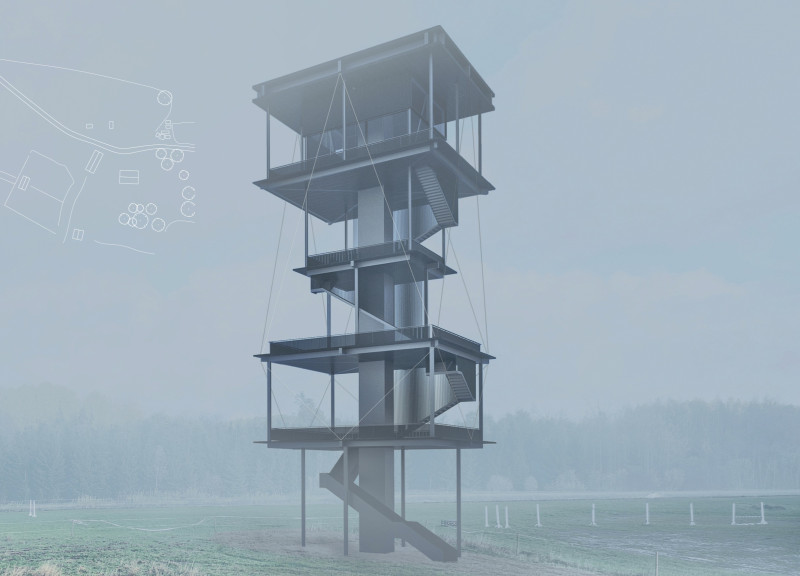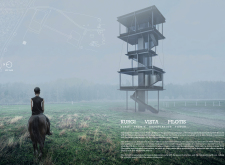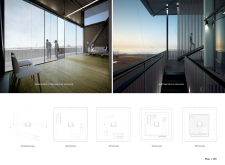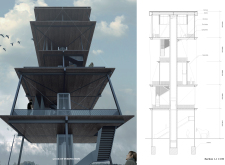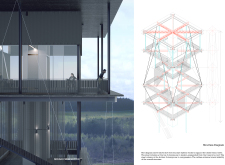5 key facts about this project
The Kurgi Vista Observation Tower is an architectural project located in North Latvia’s Biosphere Reserve. This structure provides an observation platform designed to enhance the visitor experience while promoting an appreciation for the surrounding natural landscape. It features a vertical design that encourages exploration, offering panoramic views of the diverse ecosystems present in the area.
The primary function of the Kurgi Vista is to serve as an observation point and a gathering space, inviting visitors to engage with their environment. The architecture emphasizes transparency and openness, integrating both functional and experiential components into the design. This creates a dialogue between the structure and the natural surroundings, facilitating a unique visitor experience.
Unique Design Approaches
The architectural approach of the Kurgi Vista incorporates a stepped design, with each level slightly cantilevered over the one below. This configuration allows for enhanced sightlines and a dynamic silhouette against the landscape. The use of extensive glazing encourages natural light and reinforces the structure’s connection to the outdoors, allowing unobstructed views that change with the weather and time of day.
Material choice plays a critical role in the project’s identity. High-strength steel serves as the primary structural framework, providing durability while maintaining an open feel. Concrete is used for the base and elevator shaft, ensuring stability and accessibility. The incorporation of large glass panels allows for visual permeability, while wood is utilized for the flooring and certain interior finishes to introduce warmth into the overall aesthetic. Additionally, tension cables are employed to support the upper tiers, contributing to the tower’s lightweight appearance while ensuring structural integrity.
Circulation within the tower promotes interaction among visitors. Open staircases and an accessible elevator core facilitate movement between levels, encouraging spontaneous gatherings and moments of reflection. The design effectively enhances the visitor's experience by creating opportunities for social interaction and connection with nature.
Structural Integrity and Environmental Considerations
The Kurgi Vista’s design acknowledges environmental considerations by minimizing land disruption. The elevated structure allows the surrounding ecology to thrive while offering an airy experience for visitors. Sustainable design practices are evident in the careful selection of materials, and the integration of architectural concepts that favor renewable resources and environmental sustainability.
The Kurgi Vista Observation Tower stands out in its commitment to blending functionality, aesthetic appeal, and environmental responsibility within architecture. Each element is thoughtfully designed to support the tower’s role as a functional and enriching experience for users.
To gain further insights into the architectural plans, sections, and innovative design ideas that shaped this project, readers are encouraged to explore the detailed project presentation for comprehensive information and analysis.


